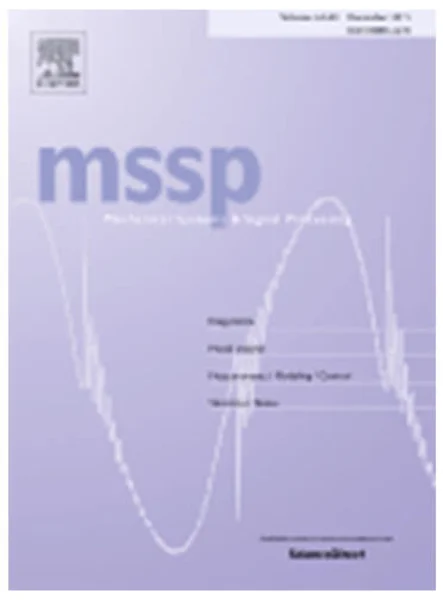-
vibration analysis of rotating machinery using time–frequency analysis and wavelet techniques
جزئیات بیشتر مقاله- تاریخ ارائه: 1390/01/01
- تاریخ انتشار در تی پی بین: 1390/01/01
- تعداد بازدید: 502
- تعداد پرسش و پاسخ ها: 0
- شماره تماس دبیرخانه رویداد: -
time–frequency analysis, including the wavelet transform, is one of the new and powerful tools in the important field of structural health monitoring, using vibration analysis. commonly-used signal analysis techniques, based on spectral approaches such as the fast fourier transform, are powerful in diagnosing a variety of vibration-related problems in rotating machinery. although these techniques provide powerful diagnostic tools in stationary conditions, they fail to do so in several practical cases involving non-stationary data, which could result either from fast operational conditions, such as the fast start-up of an electrical motor, or from the presence of a fault causing a discontinuity in the vibration signal being monitored. although the short-time fourier transform compensates well for the loss of time information incurred by the fast fourier transform, it fails to successfully resolve fast-changing signals (such as transient signals) resulting from non-stationary environments. to mitigate this situation, wavelet transform tools are considered in this paper as they are superior to both the fast and short-time fourier transforms in effectively analyzing non-stationary signals. these wavelet tools are applied here, with a suitable choice of a mother wavelet function, to a vibration monitoring system to accurately detect and localize faults occurring in this system. two cases producing non-stationary signals are considered: stator-to-blade rubbing, and fast start-up and coast-down of a rotor. two powerful wavelet techniques, namely the continuous wavelet and wavelet packet transforms, are used for the analysis of the monitored vibration signals. in addition, a novel algorithm is proposed and implemented here, which combines these two techniques and the idea of windowing a signal into a number of shaft revolutions to localize faults.
مقالات جدیدترین رویدادها
-
استفاده از تحلیل اهمیت-عملکرد در ارائه الگوی مدیریت خلاقیت سازمانی و ارائه راهکار جهت بهبود
-
بررسی تاثیر ارزش وجوه نقد مازاد بر ساختار سرمایه شرکت های پذیرفته شده در بورس اوراق بهادار تهران
-
بررسی تأثیر سطح افشای ریسک بر قرارداد بدهی شرکت های پذیرفته شده در بورس اوراق بهادار تهران
-
بررسی تأثیر رتبه بندی اعتباری مبتنی بر مدل امتیاز بازار نوظهور بر نقد شوندگی سهام با تأکید بر خصوصی سازی شرکت ها
-
تأثیر آمیخته بازاریابی پوشاک ایرانی بر تصویر ذهنی مشتری پوشاک ایرانی (هاکوپیان)
-
معرفی و مقایسه روش های تعیین سرفاصله در حمل و نقل همگانی
-
چگونگی ایفای نقش بانک مرکزی در بازارهای ارز و پول
-
تحلیل پایداری قطار شهری شیراز با استفاده از نرم افزار twofs و مقایسه با روابط تجربی
-
natural convection from inclined plates to gases and liquids when both sides are uniformly heated at the same temperature
-
effect of near- field ground motions on the stability of embankment dams
مقالات جدیدترین ژورنال ها
-
مدیریت و بررسی افسردگی دانش آموزان دختر مقطع متوسطه دوم در دروان کرونا در شهرستان دزفول
-
مدیریت و بررسی خرد سیاسی در اندیشه ی فردوسی در ادب ایران
-
واکاوی و مدیریت توصیفی قلمدان(جاکلیدی)ضریح در موزه آستان قدس رضوی
-
بررسی تاثیر خلاقیت، دانش و انگیزه کارکنان بر پیشنهادات نوآورانه کارکنان ( مورد مطالعه: هتل های 3 و 4 ستاره استان کرمان)
-
بررسی تاثیر کیفیت سیستم های اطلاعاتی بر تصمیم گیری موفق در شرکتهای تولیدی استان اصفهان (مورد مطالعه: مدیران شرکتهای تولیدی استان اصفهان)
-
بررسی تاثیر چابکی سازمانی و خلاقیت سازمانی بر عملکرد شغلی کارکنان بانک توسعه صادرات ایران
-
اصطلاحات نجومی و بازتاب آن در شعر برخی از شاعران
-
«فمنیسم پسااستعماری و جنبش متقدم زنان در ایران» دیگری سازی و مناسبات سلطه
-
مدلی برای تحقق اهداف اقتصاد مقاومتی در بیمارستان (مطالعه موردی: بیماران مبتلا به بیماری های خاص)
-
the study of electron-orbital properties of bipolar energy of complex (2,6-diaminopyridinium bis (4-hydroxy-pyridine-2,6,6-dicarboxylate) dihydrate chromate iii))) with alteration of ligands by computational methods




سوال خود را در مورد این مقاله مطرح نمایید :